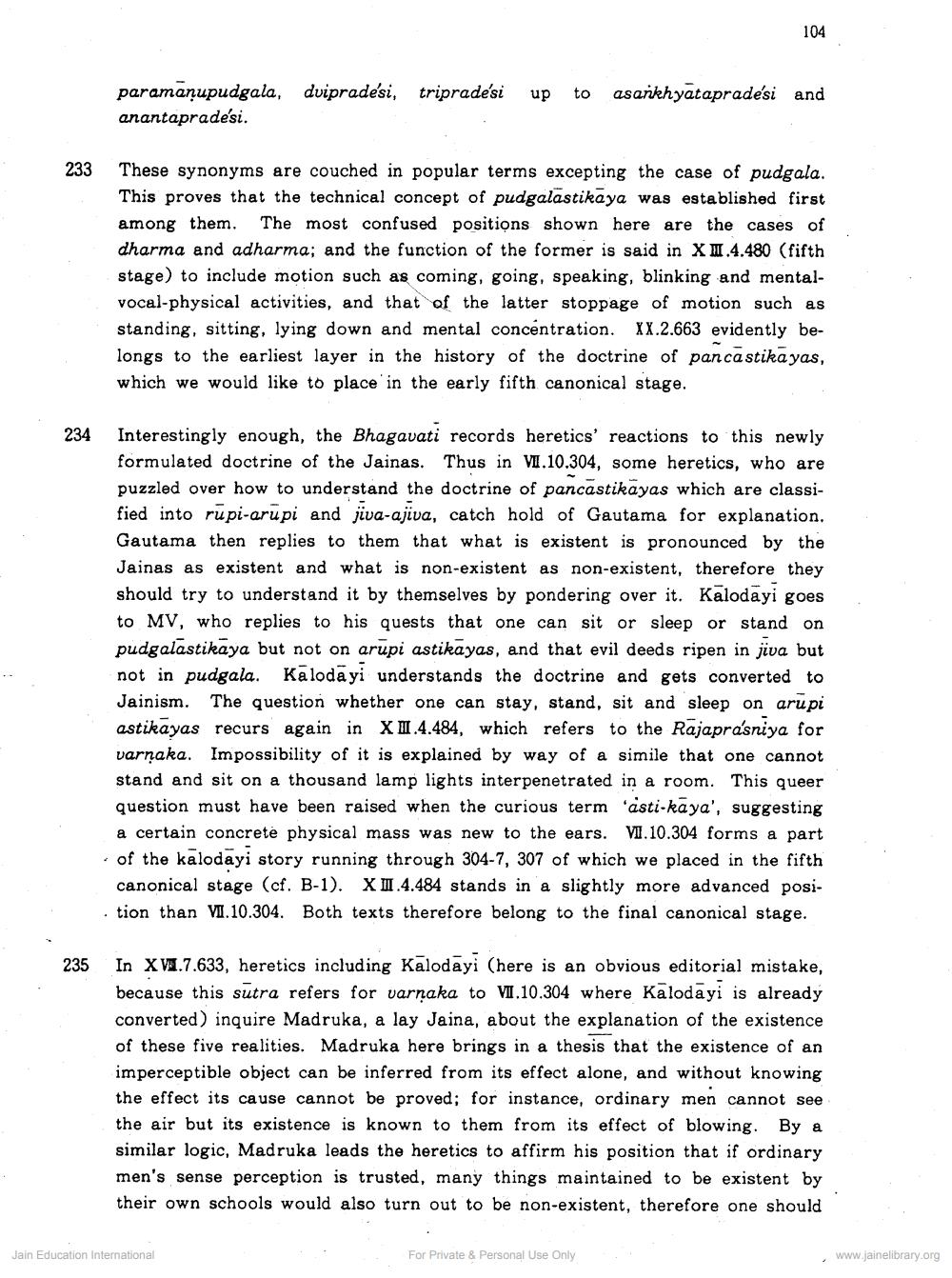________________
104
paramanupudgala, dviprade'si, triprade'si anantaprade'si.
up
to
asankhyataprade'si and
233
These synonyms are couched in popular terms excepting the case of pudgala. This proves that the technical concept of pudgalāstikaya was established first among them. The most confused positions shown here are the cases of dharma and adharma; and the function of the former is said in XI.4.480 (fifth stage) to include motion such as coming, going, speaking, blinking and mentalvocal-physical activities, and that of the latter stoppage of motion such as standing, sitting, lying down and mental concentration. XX.2.663 evidently belongs to the earliest layer in the history of the doctrine of panca stika yas, which we would like to place in the early fifth canonical stage.
234
Interestingly enough, the Bhagavati records heretics' reactions to this newly formulated doctrine of the Jainas. Thus in VI.10.304, some heretics, who are puzzled over how to understand the doctrine of pancastikāyas which are classified into rūpi-arupi and jiva-ajiva, catch hold of Gautama for explanation. Gautama then replies to them that what is existent is pronounced by the Jainas as existent and what is non-existent as non-existent, therefore they should try to understand it by themselves by pondering over it. Kalodayi goes to MV, who replies to his quests that one can sit or sleep or stand on pudgalastikaya but not on arupi astikayas, and that evil deeds ripen in jiva but not in pudgala. Kaloda yi understands the doctrine and gets converted to Jainism. The question whether one can stay, stand, sit and sleep on arupi astikayas recurs again in XI.4.484, which refers to the Rajaprasniya for varņaka. Impossibility of it is explained by way of a simile that one cannot stand and sit on a thousand lamp lights interpenetrated in a room. This queer question must have been raised when the curious term 'asti-kaya', suggesting a certain concrete physical mass was new to the ears. VI.10.304 forms a part of the kalodayi story running through 304-7, 307 of which we placed in the fifth
canonical stage (cf. B-1). X 11.4.484 stands in a slightly more advanced posi. tion than VII.10.304. Both texts therefore belong to the final canonical stage.
235
In X V1.7.633, heretics including Kalodayi (here is an obvious editorial mistake, because this sutra refers for varņaka to VI.10.304 where Kālodayi is already converted) inquire Madruka, a lay Jaina, about the explanation of the existence of these five realities. Madruka here brings in a thesis that the existence of an imperceptible object can be inferred from its effect alone, and without knowing the effect its cause cannot be proved; for instance, ordinary men cannot see the air but its existence is known to them from its effect of blowing. By a similar logic, Madruka leads the heretics to affirm his position that if ordinary men's sense perception is trusted, many things maintained to be existent by their own schools would also turn out to be non-existent, therefore one should
Jain Education International
For Private & Personal Use Only
www.jainelibrary.org




